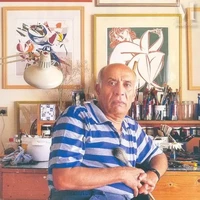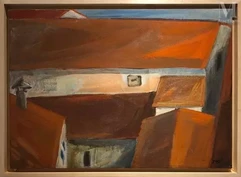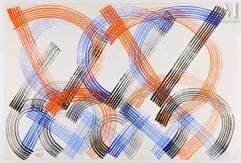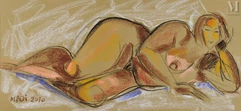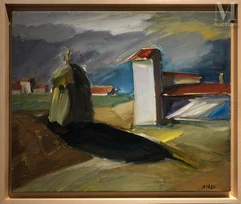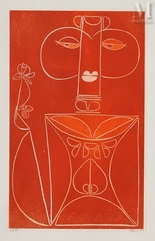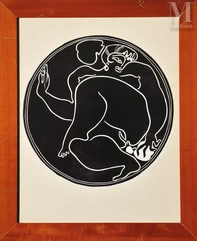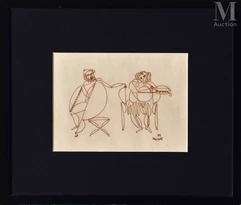Hussein Madi a étudié à l'ALBA et à Rome, où il a passé plusieurs années. À la fin des années 1960 et au début des années 1970, Eido, Elbacha, Madi et Marzouk formaient un groupe informel réuni par une même approche intellectuelle et une communauté de données socioculturelles. Eido et Elbacha étaient les aînés, ayant tous deux effectué, à des dates différentes, de longs séjours à Paris. Madi venait d'Italie et Marzouk avait passé une année en tant que boursier à Hyderabad, en Inde.
Parmi tout le groupe, Madi fut celui qui articula sa pratique de la manière la plus radicale. Ses longues années italiennes lui avaient appris à construire les formes en les déconstruisant. Que ce soit en sculpture ou dans ses toiles et dessins, le recours à l'élément premier visait avant tout à garder la trace du pinceau.
Une réflexion sur la calligraphie fondait la calligraphie et le dessin, prenant le relais du vocabulaire pictural. Les éléments du dessin étaient ceux d'un alphabet semi-figuratif qui construisait le tableau, transposition symbolique du langage.
Sa sculpture devient, par ailleurs, la mise en forme dans l'espace des mêmes éléments en deux dimensions. Le monde est signes et mots, et la peinture est ce qui constitue les mots en signes.artistic output.
Hussein Madi studied at ALBA and in Rome, where he spent several years. In the late 1960s and early 1970s, Eido, Elbacha, Madi, and Marzouk formed an informal group united by a shared intellectual approach and sociocultural community. Eido and Elbacha were the elders, both having had long stays in Paris at different times. Madi came from Italy, and Marzouk had spent a year as a scholar in Hyderabad, India.
Among the group, Madi was the one who articulated his practice in the most radical way. His long years in Italy taught him to construct forms by deconstructing them. Whether in sculpture or in his paintings and drawings, the use of the primary element aimed above all to retain the trace of the brush.
A reflection on calligraphy fused calligraphy and drawing, taking over from pictorial vocabulary. The elements of the drawing were those of a semi-figurative alphabet that constructed the painting, a symbolic transposition of language.
His sculpture, on the other hand, became the shaping of the same elements in two dimensions. The world is signs and words, and painting is what constitutes words into signs.

